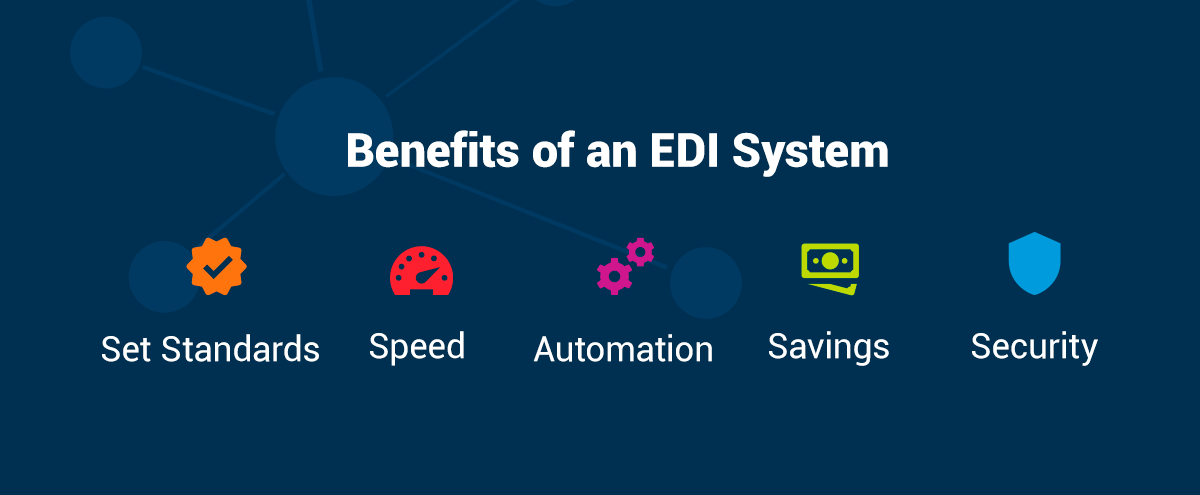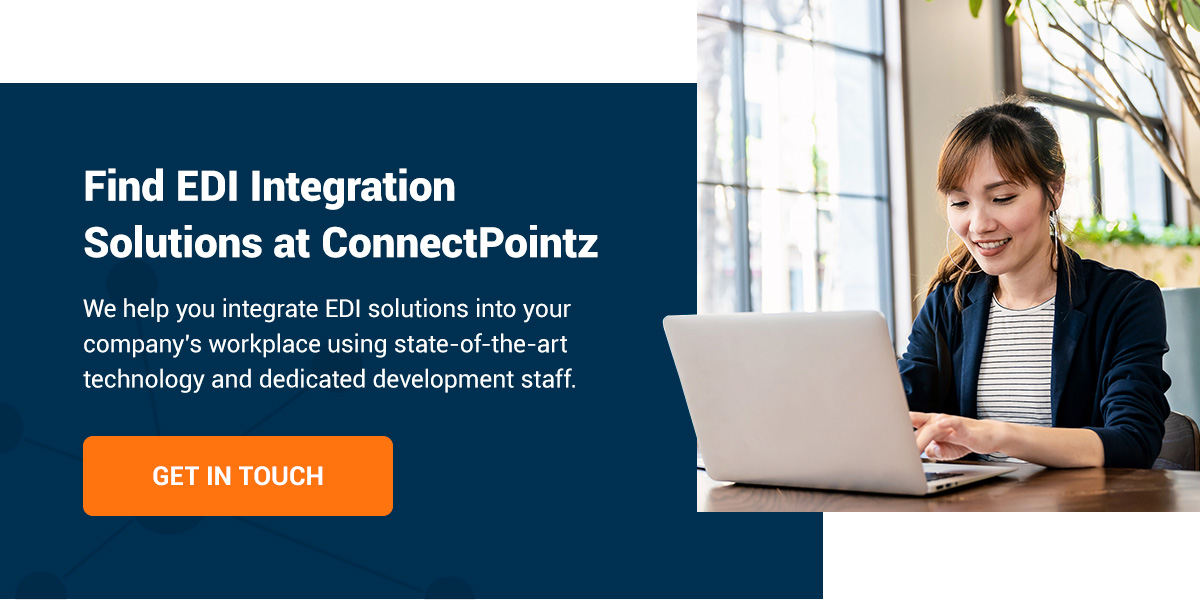
As technology becomes a pivotal part of business interactions, integrating a supplier portal or an electronic data interchange (EDI) platform into your company is beneficial. Choosing between both systems is easier with some guidance. There are benefits to each platform to consider before making a final decision.
What Is an EDI Platform?
An electronic data interchange is a platform that electronically exchanges business documents and allows companies to send and receive information safely and securely. Most EDI documents follow a standardized format, making paperless communication easier as electronic data transfers from one computer to another. Companies can then use that data to map internal applications and systems within the business while automatically transmitting documents through the EDI platform.
Data and documents can use an internal format specific to the company, like accounting solutions or an enterprise resource planning (ERP) system. A capable EDI system includes a transaction network that can receive, send and encrypt transactions and a translator that can reformat transactions and documents into the correct application.
Aside from additional support from expert team members, the EDI platform should also include a functional mapping system that helps the conversion process move smoothly. A mapping system may also assist in translating data into better formats for a work environment that solely relies on technology. For example, you may convert some formats like EDIFACT or OFTP2 to CSV, txt or flat file.
Benefits of an EDI System
Using an EDI portal system for your business has many benefits that improve procurement and encourage clear communication between companies. Here are five benefits to keep in mind.
1. Set Standards
An EDI system sets standards for your company's transactions and communications, minimizing the number of complications within the process and reducing the chance of lost data, costly chargebacks or missed service level agreements (SLAs).
Having a set standard for documents and applications also means you can transform data no matter the original format. You can convert ANSI X12 formats and Tradacoms data or create EDI, JSON and XML data standards.
2. Speed
Utilizing an EDI platform can significantly cut processing times due to fully automated tasks. It will also improve order-to-cash cycles and business efficiency while taking advantage of the prebuilt connections through online technologies.
3. Automation
An automated system allows employees to focus their valuable time on other tasks rather than manual data entry. EDI systems ensure such tasks are automatically updated and reduce the chance of human error. This automation will also help you maintain system compliance through the online portals.
4. Savings
An EDI platform can reduce costs in several ways, from the cost of labor to the time spent completing manual tasks. The system will also provide your company with the resources to manage larger data applications without extra money spent on bulky equipment or additional employees.
5. Security
EDI systems are secure, designed for companies that want their data and documents to travel safely between clients and businesses. Many platforms also allow you to restrict access to certain users or authorize specific users within the system while sharing data in a secure portal. The program can also track your archives and transactions to ensure you comply with current EDI specifications.

What Is a Supplier Portal?
A supplier management portal is a secure online management system that connects third-party suppliers of goods and services. They're beneficial for businesses that work with many different suppliers and need an online portal that can streamline the procurement process.
A supplier portal is most often used for entering information, displaying data, communicating within companies and submitting documents for review like contracts, invoices, tax forms or purchase orders. Some features of a supplier program include constant access to information and a constantly updated platform of transactions.
Here are a few areas in which supplier portals are most helpful:
- Invoice submission: Suppliers can submit and view invoices and receive payments quickly, making workflow efficient.
- Invoice inquiries: Payments and invoices can be viewed and followed up in real time, saving time and energy.
- Payment disputes: Suppliers may dispute payments online and track their requests through a streamlined process.
- Dynamic discounting: Some buyers may offer early payment discounts depending on negotiations.
- Vendor onboarding: Give suppliers links with instructions, FAQs and webinars during the onboarding process.
Supplier Portal Benefits
There are several benefits to using supplier portal solutions for your business. For example, a supplier portal can help eliminate paper usage, promoting sustainability and environmentalism within your company. It can also reduce the chance for human error, streamline tasks and workflow and create an overall accurate and organized system.
Through automated processes and improved communication, businesses can stay up to date on essential applications and data while trusting that the portal will flag any users who may be fraudulent. Here are four more benefits of using supplier portals.
1. Integration
Supplier portals provide real-time updates about procurement and show a singular view of data that companies can use to convey accurate and speedy information to each other. An integrated portal eliminates errors while managing automatic changes and updating data.
2. Automated Tasks
A supplier portal will reduce the number of manual tasks your employees must perform. The system will automatically store and provide copies of invoices, statements, documents, data and more while reducing your administration workload.
3. Management
A supplier portal makes it easy to manage your account online and sign in securely. You can view account information, a history of your quotations, invoices, purchases and delivery dates. Updating account information is safe and functional with an online portal where companies can view those updates anytime.
4. Notifications
Staying updated with notifications is easier than ever with a supplier portal. Most updates are sent by email, where companies stay informed on necessary actions to take during the procurement process. While a portal may automatically send out information, businesses can rest assured that they won't miss a thing with automatic notifications enabled.
Choosing Between EDI Platforms and Supplier Portals
When choosing between an EDI platform or a supplier portal, consider the benefits of each and which system may best fit your company's needs. Remember that supplier portals are often more challenging to manage, considering many retailer portals and logins may lessen productivity throughout the day.
On the other hand, EDI platforms are a singular destination that can automatically alert you when orders arrive or when data has been updated. You don't have to worry about logging in to several portals throughout the day, saving you time and energy on tasks. EDI systems also consolidate information, making it easier for businesses to find documents when needed.
Find EDI Integration Solutions at ConnectPointz
At ConnectPointz, we provide a user-friendly desktop EDI service that has assisted companies and clients for over 30 years. Our program is a functional electronic data processor for drop-shipping and web services. We help you integrate EDI solutions into your company's workplace, automating tasks and documents using state-of-the-art technology and dedicated development staff.
Contact us today to speak to a representative.










































